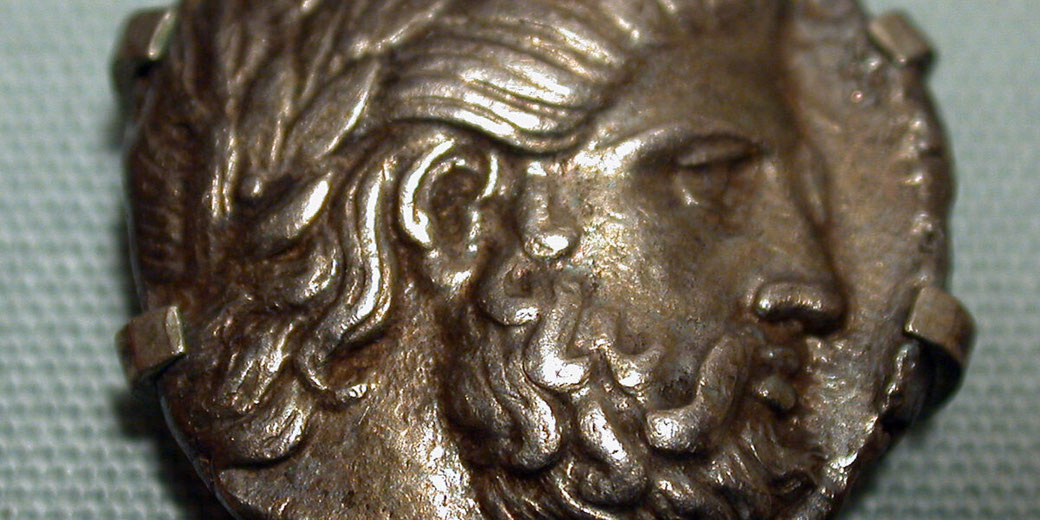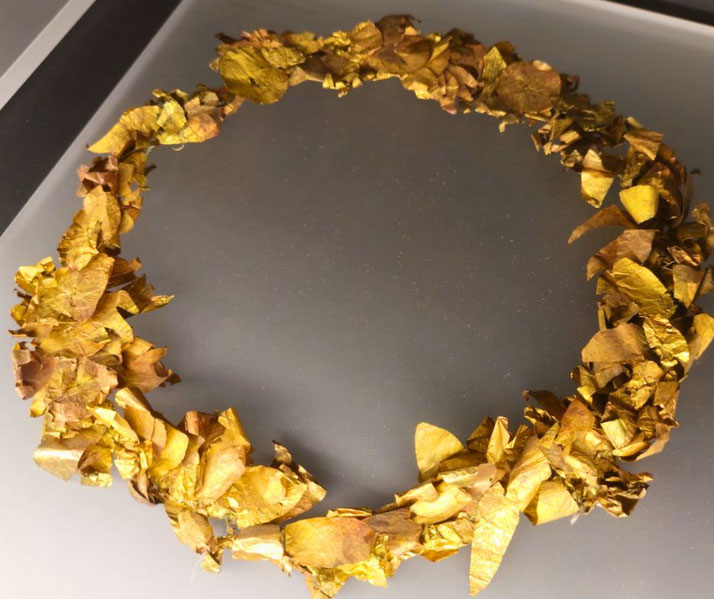The remarkable discovery of the intact tomb of Alexander the Great's father, Philip II of Macedon

In 1977, a remarkable archaeology finding occurred in northern Greece when Manolis Andronikos found what he believed to be the tomb of Philip II of Macedon.
Hidden beneath a burial mound at the ancient site of Aigai, the royal grave had remained unlooted since the fourth century BCE.
The contents of the tomb offered scholars rare physical evidence of Macedonian royalty and provided a possible resting place for the father of Alexander the Great.
Who was Philip II?
Philip II was born in 382 BCE and ruled the Kingdom of Macedon from 359 BCE until his death in 336 BCE.
He belonged to the Argead dynasty, which traced its descent from Heracles and held power over a relatively unstable kingdom situated on the northern fringes of the Greek world.
After he spent his youth as a political hostage in Thebes, Philip returned to Macedon with the military knowledge he had gained from training under Epaminondas having watched Theban military training under Epaminondas and learned key innovations in tactics and organisation.
He became king during a time of political division and external threats from both Illyrian and Paeonian forces.
Philip quickly restructured the army by introducing the Macedonian phalanx, a military formation that relied on long spears called sarissas and coordinated manoeuvres by professionalised infantry.
He increased the effectiveness of the Companion Cavalry and placed loyal commanders in charge of key units, ensuring both battlefield discipline and personal allegiance to the crown.
Through conquest alongside alliance-building achieved by means of bribery and marriage, Philip expanded Macedonian control over Thessaly, Thrace, and several northern Greek city-states.
His diplomatic skill allowed him to take control of southern Greece's affairs without launching a full-scale invasion, and by 337 BCE, he had convened a congress in Corinth that established the League of Corinth, which placed him at the head of a pan-Hellenic alliance with the stated aim of invading Persia.
His marriage to Olympias of Epirus produced Alexander, who was born in 356 BCE and raised within a court shaped by military drive and courtly intrigue.
The dramatic, and very public, death of Philip II
Philip's reign ended during a carefully staged celebration in 336 BCE when he appeared at a public ceremony in Aigai to mark the marriage of his daughter Cleopatra to Alexander I of Epirus.
As Philip walked into the theatre in front of a large crowd, wearing ritual robes and flanked by his bodyguards, one of them, Pausanias of Orestis, suddenly attacked and fatally stabbed him.
The assassin attempted to escape but was killed by guards before he could be interrogated, leaving questions about his motives and potential conspirators unresolved.
Ancient authors offered multiple theories to explain Pausanias’ actions. Some described a personal vendetta rooted in court betrayal and unpunished abuse, while others implied political motives that pointed toward members of the royal family.
Olympias had reasons to feel threatened by Philip’s growing favour for Cleopatra Eurydice, a younger wife from a powerful Macedonian noble family whose offspring could challenge Alexander’s claim to the throne.
Though some sources hinted at Alexander’s possible involvement, there was no conclusive evidence, and most later historians dismissed the idea as speculative.
Philip’s sudden death created a moment of intense uncertainty in Macedon.
However, Alexander acted swiftly to eliminate potential rivals and assert his control over the army and the court.
Within days, he secured the loyalty of key commanders, eliminated claimants, and ensured that his father’s funeral rites were performed according to royal tradition.
The incredible rediscovery of his tomb
More than two millennia after Philip’s assassination, the precise location of his tomb remained unknown, although ancient sources recorded that Macedonian kings received burial at Aigai.
In November 1977, During the excavation of the Great Tumulus at Vergina, Manolis Andronikos uncovered a sealed chamber that had never been looted.
Inside, digging team found a wealth of objects that had remained undisturbed since the fourth century BCE, including cremated remains placed inside an decorated gold chest.
The dating of the objects to approximately 340–330 BCE, combined with analysis of the grave goods’ style and construction features, supported Andronikos’ conclusion.
The tomb, known as Tomb II, consisted of two rooms, a main burial chamber and a side chamber, and contained objects of extraordinary quality and significance.
The male remains, which rested in a gold larnax adorned with a sixteen-rayed starburst, now known as the Vergina Sun.
This emblem, later used by Greek Macedonians as a cultural symbol, became a subject of international dispute during the 1990s conflict between Greece and the newly independent Republic of Macedonia.
A second larnax, discovered in the antechamber, contained the cremated bones of a woman surrounded by rich grave goods.
Andronikos immediately proposed that the tomb belonged to Philip II, citing the dating of the artefacts, the royal nature of the burial, and the physical evidence found among the remains.
The discovery received international attention, and many experts accepted the identification, which aligned with historical descriptions of Philip’s funeral and the known customs of the Argead dynasty.
Skeletal analysis later revealed damage to the right orbital socket and a misaligned tibia, the latter of which was interpreted as evidence of a past injury.
Although Diodorus Siculus reported that Philip lost an eye during the siege of Methone in 354 BCE, he did not mention a leg wound.
The tibial damage became a key detail in support of the Philip II attribution based on forensic interpretation.
The archaeological site of Vergina
Vergina is located at the base of the Pierian Mountains in northern Greece, and covers the site of ancient Aigai, which was the ceremonial capital of the Macedonian kingdom.
Even after the political centre shifted to Pella, Aigai remained the traditional location for royal burials and public rituals.
Written sources confirm that Macedonian kings were buried at Aigai to maintain dynastic continuity and ancestral honour.
Excavations at Vergina in the twentieth century uncovered the remains of a royal palace, fortified walls, and over 300 burial mounds.
The most important of these was the Great Tumulus, a large earthen mound that concealed several tombs of elite individuals.
Among these, Tomb II attracted the greatest interest because of its untouched condition, detailed construction, and valuable contents.
Tomb III, located nearby and dated slightly later, contained the remains of a youth and has been suggested as the burial place of Alexander IV, though others argue he may have been buried at Amphipolis.
Tomb I, though looted in antiquity, yielded remains possibly belonging to Cleopatra Eurydice and her child.
The presence of wall paintings, ceremonial armour, and finely crafted vessels indicated that the tombs belonged to members of the royal house.
Pigment analysis of the paintings revealed the use of Egyptian blue and cinnabar, expensive materials that suggest elite patronage and artistic sophistication not commonly found in Macedonian tombs of the period.
How the tomb was built
Tomb II featured a detailed design and high-quality construction materials. Its two main rooms were built with large limestone blocks and protected by a marble door that imitated wooden panels through painted decoration and bronze studs.
The burial chamber was covered by a barrel-vaulted roof, which remained intact and contributed to the preservation of the contents.
The vault's voussoir stones spread the weight evenly, a method rare in Greek funerary architecture at the time.
The walls were decorated with painted scenes, including a mural that depicted a royal hunting expedition.
This image showed riders in pursuit of lions and deer and conveyed martial skill that exemplified both strength and leadership qualities.
Some scholars viewed the figures as representing Philip and Alexander, although no inscriptions confirmed their identities.
The mural, which measured several metres in length, remains one of the earliest large-scale paintings preserved from ancient Macedonia.
The cremated male remains were placed inside a gold larnax that rested in a marble sarcophagus.
Around it, archaeologists found a ceremonial iron cuirass with gold embellishments, a gilded helmet, greaves of unequal length, and a sword.
A gold oak-leaf crown and a purple cloth embroidered with gold thread further emphasised the deceased’s royal status.
One of the greaves was custom-shaped to accommodate a leg injury, a detail frequently cited in support of the identification with Philip II.

But is this really the tomb of Philip II?
The identification of Tomb II as the final resting place of Philip II has generated considerable debate.
Manolis Andronikos and many supporters cited the dating of the tomb, the military injuries found on the skeleton, and the very high quality of the grave goods as evidence that the occupant was Philip.
However, alternative theories soon emerged, with some scholars such as Eugene Borza and Miltiades Hatzopoulos proposing that the tomb belonged to Philip III Arrhidaeus, who ruled Macedon after Alexander’s death and also received a royal burial at Aigai.
In 2015, Antonis Bartsiokas and his team published a study in Proceedings of the National Academy of Sciences claiming that the skeletal remains in Tomb II showed no evidence of eye trauma and instead matched the age and physical condition of Arrhidaeus.
Their findings questioned the basis of the original identification and prompted new rounds of forensic analysis.
Supporters of the Philip II theory responded by pointing to the custom-fitted greaves, which appeared to accommodate an old leg wound, and the ornate cuirass, which they argued better suited a powerful king than a puppet ruler.
The debate continues, with both sides drawing on evidence from physical anthropology supported by both historical texts and archaeological context.
Regardless of the final conclusion, the discovery of Tomb II provided one of the richest sources of information about Macedonian royal culture and elite burial practice.
Its contents, construction, and historical implications have transformed our understanding of fourth-century BCE Macedon and provided detailed insight into the world of Philip and his successors.
Visitors can now see the tomb and its artefacts displayed in the underground museum at Vergina, which opened to the public in 1997 and preserves the original setting beneath the Great Tumulus.
What do you need help with?
Download ready-to-use digital learning resources
Copyright © History Skills 2014-2025.
Contact via email
With the exception of links to external sites, some historical sources and extracts from specific publications, all content on this website is copyrighted by History Skills. This content may not be copied, republished or redistributed without written permission from the website creator. Please use the Contact page to obtain relevant permission.





